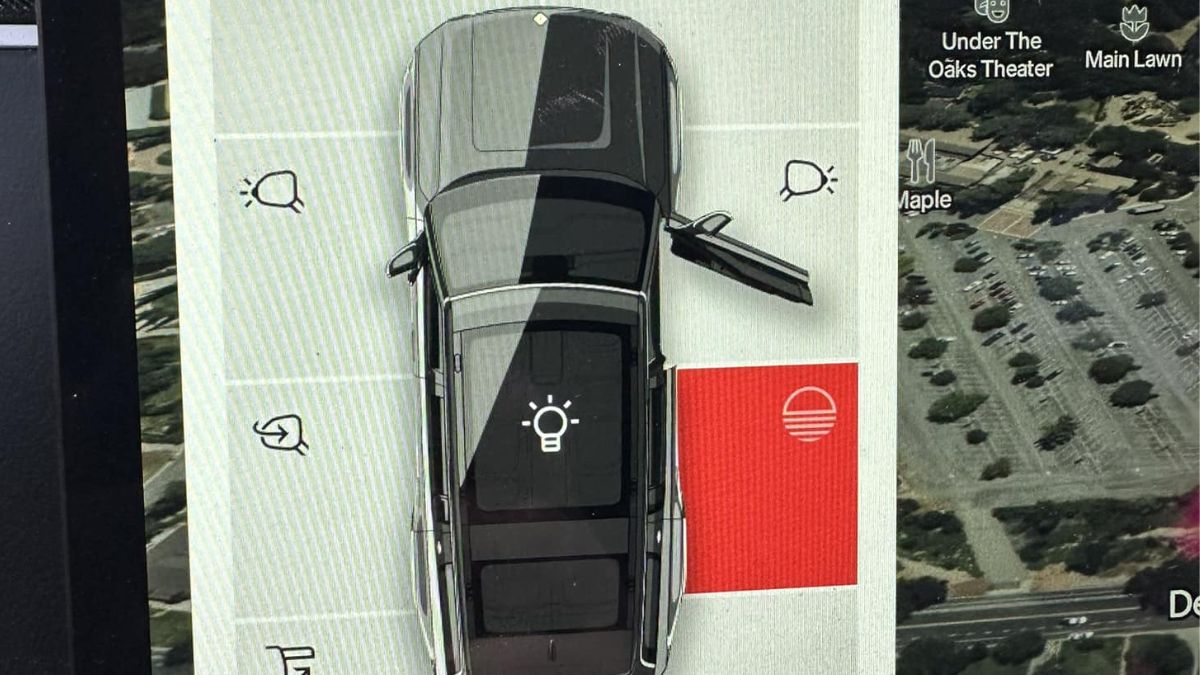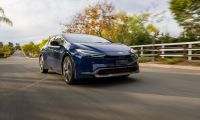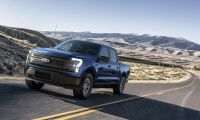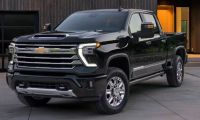In the evolving world of electric vehicles, Rivian has been a trailblazer, earning praise for its rugged and innovative electric trucks and SUVs. However, a recent incident involving the 2025 Rivian R1S highlights some serious concerns about the electric adventure vehicle's reliability, especially in the face of a seemingly minor issue that escalated into a full-blown nightmare. The story comes from Kipp Christiansen, who shared his experience in the RIVIAN Electric Vehicle Discussion group, shedding light on a malfunction so severe it left him, and his 125-pound dog trapped inside the vehicle, unable to escape. The catalyst for this disaster was a blown pyrofuse during a routine charging session at a Tesla Supercharger in Pasadena, California.
Kipp’s ordeal began when he was charging his 2025 Rivian R1S using the Rivian-supplied adapter. As the vehicle reached 80% charge, he heard a “pop” under the driver’s seat, followed by a series of alarming malfunctions. Kipp explained, "On the day of the fire evacuation, 1/8/25, I was charging at a Tesla Supercharger in Pasadena using the Rivian-supplied adapter. When it hit 80%, I heard a pop under the driver’s seat. The 2025 R1S began to malfunction (windows slowly going up and down, and the dash lighting up like a Christmas tree). There was zero functionality, and no doors or windows would open, including the rear hatch. My 125-pound dog was basically trapped in the back, and it was a serious pain to get her out. Not an ideal situation in an emergency."

This left Kipp and his dog in a truly dangerous situation. Not only was he unable to access the vehicle, but the malfunction also rendered the car inoperable. The vehicle was flat bedded to the nearest service center, where technicians worked for nearly three weeks to diagnose and resolve the issue. Ultimately, they found that the cooling valve malfunctioned during the charging process, causing the rear drive unit (RDU) to overheat. This led to the pyrofuse blowing and the total vehicle malfunction.
Despite the extensive repair time, Kipp’s troubles didn’t end there. After receiving his vehicle back, he began noticing additional issues, further compounding his frustration. “They finally gave me back the car this past Saturday afternoon, and by Sunday morning, I noticed a metal knocking noise in the rear passenger side, only present when in ‘High’ suspension mode and going over any type of speed bump or rising driveway entrance,” he recounted. Even though Kipp demonstrated the noise to the technicians, they insisted they couldn’t replicate it, leaving him even more exasperated.
Kipp’s nightmare didn’t stop with the suspension issue. He also discovered that the dynamic roof of the vehicle was no longer functioning. In a bizarre turn of events, Kipp said, “The tech didn’t even know what a dynamic roof is, if you can believe that.” This lack of awareness from the technicians only added to his growing list of grievances, as it became evident that the Rivian service center was struggling to address the vehicle’s problems properly. In the face of repeated visits and unresolved issues, Kipp turned to the forum for advice on how to proceed.
The Struggles with EV Service Centers
Many of the comments left on Kipp’s post echoed his frustrations, with fellow Rivian owners sharing their own experiences and offering advice. One user, Roy Miller, recommended documenting everything meticulously, suggesting that if the vehicle wasn’t returned in the condition, it was when initially brought in for repair, Kipp should take it back. “If they can’t fix it, they can buy it back,” Roy wrote.
Another user, Thomas David Foster Yeoman, offered a technical theory on the rear suspension noise. He pointed out that if the sound only occurs in one specific suspension setting, the issue could be related to alignment. “Alignment changes with ride height adjustment, so my best guess is it’s out of spec,” he speculated.
Ben Ibarra, another Rivian owner, shared his frustrations with the service center’s lack of proper training. He recounted how technicians were about to replace his rear seat, only for him to suggest checking the fuses first. The problem turned out to be a 15-cent fuse that solved the issue, but the techs hadn’t thought to check it. “Techs are not being properly trained,” Ben commented, shedding light on a recurring issue for Rivian owners, service centers are often slow to identify simple problems or are unaware of certain vehicle features.
These comments illustrate a larger problem within Rivian’s service network, highlighting the challenges electric vehicle owners face when dealing with specialized repairs and technicians who may not fully understand the vehicle's inner workings.
How to Deal with EV Service Issues
Kipp’s experience also brings attention to the broader question of how to ensure electric vehicle service issues are properly addressed. Many owners of electric vehicles (EVs) like the Rivian R1S are turning to forums and online communities to seek advice, and it’s becoming clear that one of the biggest hurdles to owning an EV is ensuring proper servicing. As electric vehicle technology advances, it’s essential that service centers are equipped with the knowledge, tools, and training to handle these new systems effectively. Without this, owners like Kipp are left to fend for themselves, navigating long repair timelines and frustrated service teams.
For those interested in learning more about the Rivian R1S’s real-world performance and charging capabilities, you might find this article about a successful 1,300-mile trip using all Tesla chargers worth reading. It offers insights into how Rivian’s R1S performs on long road trips with Tesla’s extensive charging network. However, as Kipp’s experience highlights, charging mishaps are only one of the issues Rivian owners face.
Another related story touches on how some EV owners have encountered unexpected limitations, such as limited range when their Rivian’s battery hit 0%. If you’re considering purchasing an EV, understanding these potential quirks is important for managing expectations and preparing for the reality of EV ownership.
It’s also worth noting that Rivian is actively expanding its fleet of electric vehicles. In this jaw-dropping discovery, Rivian has been investing in electric vans, which could impact their overall service infrastructure in the future.
Finally, for those curious about Rivian’s software updates and fixes, check out this report on a situation where a Rivian R1S couldn’t recognize LED trailer lights, which shows how software bugs are also a concern for some owners. As electric vehicles continue to evolve, service and repair standards will need to keep up with technological advancements.
A Lesson for Rivian and the EV Industry
Kipp’s experience serves as a cautionary tale for both current and prospective Rivian owners and for the broader EV industry. While Rivian is an innovative leader in the electric vehicle market, it’s clear that their service infrastructure still faces significant challenges. As electric vehicles become more common, automakers will need to ensure their service centers are equipped to handle complex repairs and that technicians are adequately trained to understand and fix the unique issues EVs face.
The lesson here is clear: always be prepared for unexpected issues when purchasing an electric vehicle, especially one that’s still relatively new to the market. EV owners should be proactive about documenting issues, seeking advice from online communities, and staying informed about potential solutions. Ultimately, ensuring your vehicle is in good working order requires patience, persistence, and a willingness to stand your ground with manufacturers and service centers.
Engage with Us
Have you had any issues with your electric vehicle, particularly with servicing or repairs? How did you resolve them, and what advice would you give other EV owners who are facing similar challenges? Let us know in the comments below!
Would you trust an EV brand with a service experience like Kipp’s? Or would you consider alternatives to ensure you don’t face similar difficulties? Please share your thoughts in the comments section.
Narek Hareyan is a young automotive journalist with experience in a golf cart dealership and an interest in the automotive industry. Follow Narek on X for daily news coverage about cars.













Comments
Again, an experience not…
Permalink
Again, an experience not limited to EVs. Electronics can - and do - die at any time.
Service technician training…
Permalink
Service technician training is going to become an issue finding the right people to learn these vehicles is going to be hard. You have to think it is a relatively new frontier ice engines didn't get to where they are over night it took years of trial and error. With Rivian pushing so many out so the shareholders and customers are happy they will have many growing pains. It can also be partly how they treat their workers building the vehicles as well when they will not give a worker time to do a job right stuff gets overlooked because Rivian is more concerned with the numbers instead of perfection
I find the Rivian supplied…
Permalink
I find the Rivian supplied adapter to be flimsily built compared to the A2z adapter which I already had. Anyways this adapter business always makes me nervous. I can’t wait for the day when we won’t have to deal with adapters on road trips.
It's impossible to be…
Permalink
It's impossible to be trapped inside the vehicle. On the first gen the front door handles are purely mechanical. On the second gen the alternative door handle is purely mechanical and is impossible to not be able to open the door with those.
Yes, tech expertise for EVs…
Permalink
Yes, tech expertise for EVs is a big problem. That should get better with time.
More likely sticking with a…
Permalink
More likely sticking with a CCS charger wouldn't have caused this.
What has this got to do with…
Permalink
What has this got to do with EVs. This was normal behavior on Renaults from the 90s.